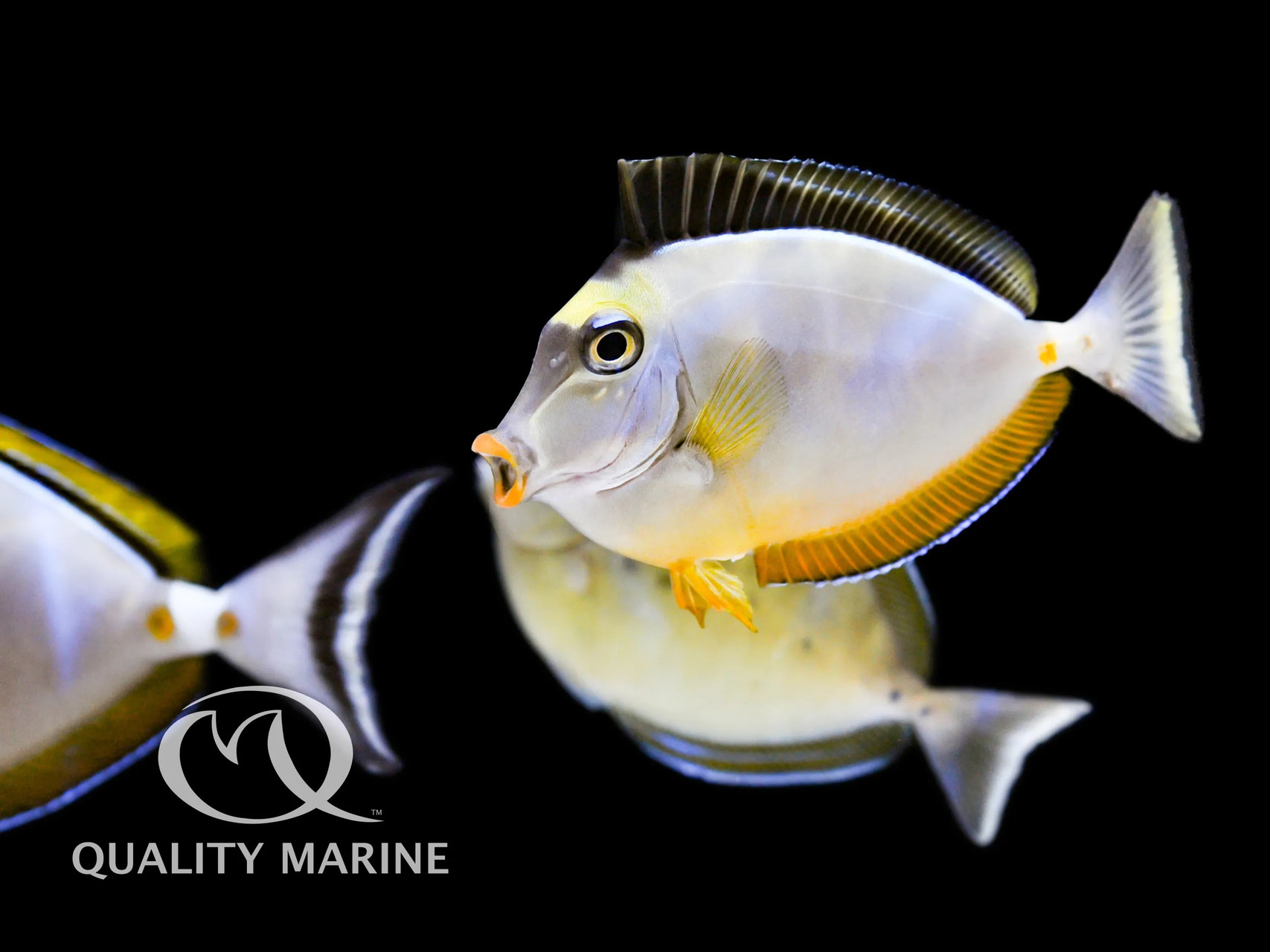Popular Piscines: Naso Lituratus

The fish known to science as Naso lituratus has many common names, the most common being Naso Tang, followed by Unicorn Tang, Lipstick Tang and Orangespine Surgeon fish. However, worldwide there are over 150 common names for this fish, the Philippines have 30 names for it by themselves! It's popularity comes in part from its extraordinary distribution including most of the Pacific and a good portion of the Indian Ocean. Throughout most of the Indian ocean it has a beautiful and rebellious cousin sporting a blond mohawk, and that is identified as a separate species (Naso Elegans). The other portion of N. lituratus popularity is due to its prevalence as a food fish in many tropical countries, where it is most frequently harvested commercially.
In The Wild
They can reach size of up to 18 inches, though somewhere around a foot in length is much more commonly reached, fish 8 to 10 inches long are not uncommon in a captive environment. As such, a large aquarium is a requisite for good health as they grow. Naso tangs are found in water temperatures between 74 and 90 degrees Fahrenheit. Unlike many other “Surgeonfish” Naso tangs of all sorts are believed to spawn in pairs rather than aggregations. While sometimes found at staggering depth, they are a reef associated fish and thus most often found in water less than 100 feet deep (where all the light and thus algae is). Juvenile fish are frequently found in congregations with other juvenile surgeonfish.
In The Aquarium
They are a very hardy and “personable” fish in captivity, growing to know their aquarists and easily accepting prepared foods. A variety of foods should be offered to any surgeonfish and these are no exception. We feed them lots of algae based food as it is important for how their digestive systems work, but they are also regularly fed a nutrient dense pellet, which is a must for their nutritional needs. With a diet like this, they produce a copious amount of waste. This in turn produces quite a bit of food for other organisms in your aqarium, but can adversely affect water quality if filtration and flow are not up the the task of handling it. Frequently, you will see Naso genus tangs listed as “venomous.” This is because they have spines at the base of their tailfin (remember, this is a surgeonfish) and those have a mild venom associated with them. These are like small blades and can leave you with a cut that hurts more than it should. Careful handling can eliminate this risk. Some people caution against keeping these in acrylic aquariums because of the scratch risk associated with the scalpels, but I have never seen this be an issue with any of the tangs I've kept. Even though they have a fairly wide range for temperatures they tolerate in the wild, it has been our experience that they do best in temps between 75 and 80 degrees.
Biblio
Randall, J.E., G.R. Allen and R.C. Steene, 1990. Fishes of the Great Barrier Reef and Coral Sea. University of Hawaii Press, Honolulu, Hawaii.
Fishbase, Luna, Susan M. , https://www.fishbase.se/summary/naso-lituratus . Accessed 26 August 2020.
Reef Life Survey, Shields, Joe, https://www.reeflifesurvey.com/species/Naso-litur... . Accessed 26 August 2020.
WetWebMedia, Fenner, Robert, http://www.wetwebmedia.com/naso.htm . Accessed 26 August 2020.